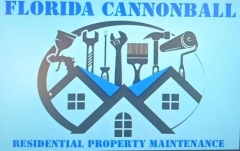Property Preservation Tech.
Property Preservation Technician: Detailed Job Description
A property preservation technician, also known as a field service technician or property preservation specialist, is responsible for maintaining, securing, and restoring vacant or foreclosed properties to ensure they remain in good condition and comply with local codes and regulations. Their work is crucial in preventing property deterioration, mitigating potential hazards, and preparing properties for sale or occupancy.
Job Responsibilities
1. Property Inspection
- Initial Assessment: Conduct comprehensive inspections of vacant or foreclosed properties to document their condition and identify necessary repairs or maintenance.
- Ongoing Inspections: Perform regular follow-up inspections to monitor property condition and ensure ongoing compliance with maintenance standards.
- Reporting: Create detailed reports documenting the property's condition, including photographs and descriptions of any damages or required repairs.
2. Securing the Property
- Lock Changes: Replace or rekey locks to secure the property against unauthorized access.
- Boarding Up: Install boards on windows and doors to protect the property from vandalism and weather damage.
- Security Systems: Set up temporary security systems or alarms to deter trespassing and theft.
3. Cleaning and Debris Removal
- Interior Cleaning: Clean the interior of the property, including sweeping, mopping, dusting, and sanitizing surfaces.
- Exterior Cleaning: Remove trash, debris, and hazardous materials from the property’s exterior.
- Yard Maintenance: Perform basic landscaping tasks such as mowing the lawn, trimming bushes, and removing weeds.
- Hazard Removal: Identify and safely remove hazardous materials, such as mold, asbestos, or biohazards.
4. Repair and Maintenance
- Minor Repairs: Fix minor issues such as broken windows, damaged doors, leaky faucets, and faulty electrical outlets.
- Major Repairs: Coordinate with licensed contractors for significant repairs or renovations, such as roof repairs, plumbing issues, and structural damage.
- Weatherization: Apply weatherproofing measures to protect the property from harsh weather conditions, including sealing cracks and installing insulation.
- Graffiti Removal: Remove graffiti from the property’s exterior surfaces.
5. Winterization
- Plumbing Preparation: Drain water from pipes, water heaters, and appliances to prevent freezing and bursting.
- Antifreeze Application: Apply antifreeze to toilets, sinks, and other plumbing fixtures.
- Heating System Maintenance: Ensure the heating system is operational or take steps to prevent damage if the property is to remain unheated.
6. Regulatory Compliance
- Local Codes and Regulations: Ensure the property complies with all local building codes, safety regulations, and homeowners’ association (HOA) rules.
- Documentation: Maintain detailed records of all work performed, including before-and-after photos, inspection reports, and receipts for materials and services.
- Permits and Approvals: Obtain necessary permits for certain types of repairs and ensure all work meets regulatory standards.
7. Communication and Coordination
- Client Interaction: Communicate with property owners, banks, real estate agents, and property management companies to provide updates on property condition and maintenance activities.
- Contractor Coordination: Schedule and oversee the work of external contractors for specialized tasks or major repairs.
- Team Collaboration: Work with other technicians and team members to ensure all tasks are completed efficiently and effectively.
Required Skills and Qualifications
1. Technical Skills
- Maintenance Knowledge: Proficiency in a wide range of maintenance and repair tasks, including plumbing, electrical work, carpentry, and HVAC systems.
- Tool Proficiency: Skilled in using various hand tools, power tools, and specialized equipment.
- Safety Practices: Knowledge of safety procedures and best practices to ensure safe working conditions.
2. Problem-Solving Abilities
- Diagnostic Skills: Ability to accurately identify problems and determine effective solutions.
- Resourcefulness: Innovative in finding cost-effective and timely solutions for property issues.
- Decision-Making: Ability to make quick and informed decisions in emergency situations.
3. Physical Stamina
- Manual Dexterity: Good hand-eye coordination and ability to perform tasks requiring fine motor skills.
- Endurance: Capability to handle physically demanding tasks, including lifting heavy objects and working in various weather conditions.
- Agility: Ability to navigate tight spaces, climb ladders, and work at heights when necessary.
4. Attention to Detail
- Precision: Meticulous in performing repairs and maintenance tasks to ensure high-quality results.
- Inspection Skills: Keen eye for identifying potential issues during routine inspections.
- Thoroughness: Commitment to completing tasks comprehensively and accurately.
5. Communication Skills
- Clear Communication: Ability to explain technical issues and maintenance plans to clients and contractors.
- Customer Service Orientation: Professional and courteous demeanor when interacting with clients and stakeholders.
- Documentation: Strong writing skills for creating detailed reports and documentation.
6. Time Management
- Prioritization: Ability to prioritize tasks based on urgency and importance.
- Efficiency: Completing maintenance tasks in a timely and efficient manner.
- Scheduling: Effective planning and scheduling of daily activities to maximize productivity.
Typical Work Environment
A property preservation technician typically works in various environments, including urban, suburban, and rural areas. They often travel between multiple properties, performing inspections, maintenance, and repairs. The work can involve both indoor and outdoor tasks, and they may encounter challenging conditions, such as extreme weather or deteriorated property conditions. The schedule may include regular working hours as well as on-call shifts for emergency repairs.
Tools and Equipment
Property preservation technicians use a variety of tools and equipment, including but not limited to:
- Hand Tools: Hammers, screwdrivers, pliers, wrenches.
- Power Tools: Drills, saws, sanders.
- Specialized Tools: Plumbing snakes, multimeters, HVAC gauges.
- Safety Equipment: Gloves, safety glasses, masks, and harnesses for high work.
- Cleaning Supplies: Brooms, mops, detergents, and sanitizers.
- Security Equipment: Locks, boards, and security systems.
Education and Training
While formal education requirements can vary, many property preservation technicians have a high school diploma or equivalent. Additional vocational training, apprenticeships, or certifications in specific trades (e.g., plumbing, electrical work, HVAC) are often beneficial. On-the-job training is common, and continuous learning is essential to stay updated with new technologies and techniques in the field.
Professional certifications from organizations such as the National Association of Mortgage Field Services (NAMFS) can enhance a technician's credentials and career prospects.
Summary
A property preservation technician plays a vital role in maintaining the condition and safety of vacant and foreclosed properties. Their work ensures that properties remain secure, compliant with regulations, and ready for sale or occupancy. Their diverse skill set and ability to perform a wide range of maintenance and repair tasks make them invaluable in the property preservation industry. Their meticulous attention to detail, problem-solving abilities, and effective communication skills are essential for ensuring the properties they manage are preserved in optimal condition.

